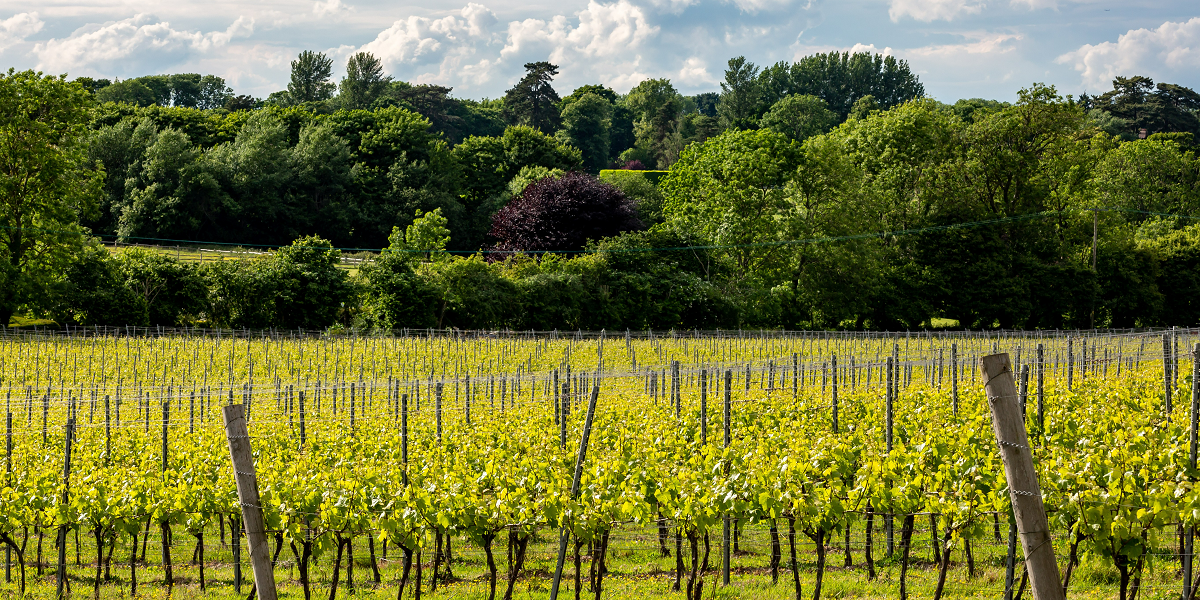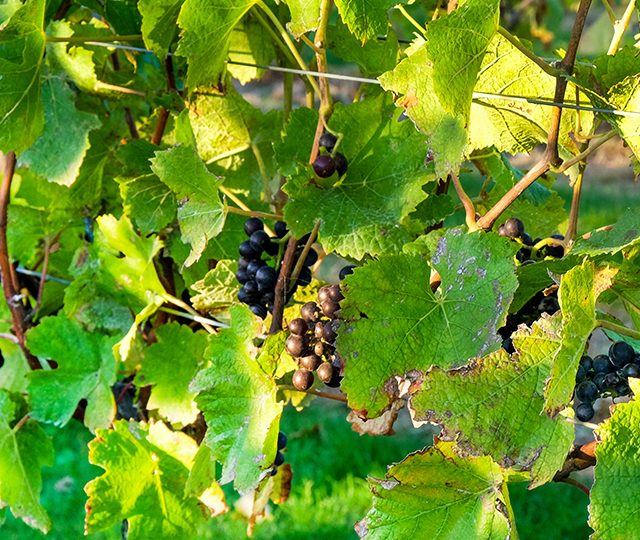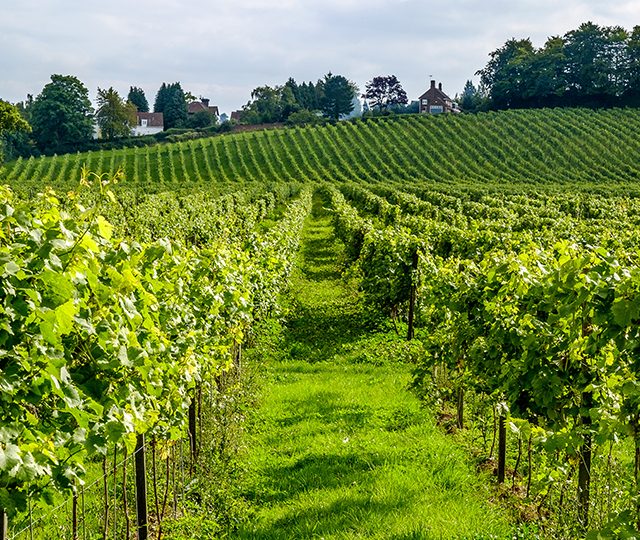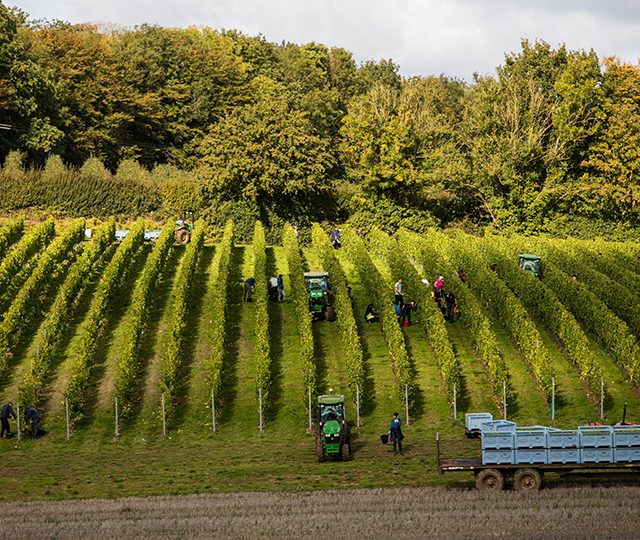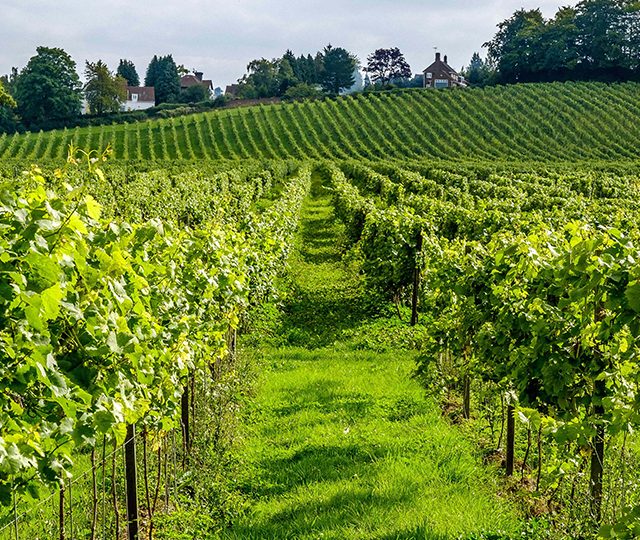Buoyant UK wine sector bucks worldwide trends
Demand for land suitable for vines and established vineyards is more buoyant than ever with the UK wine industry bucking worldwide trends.
Our annual Viticulture Report estimates that more than £80m was invested in the UK wine industry during 2023, taking the total invested over the past 10 years to almost £570m.
There was a 10% drop in global wine production in 2023 due to a combination of extreme weather and widespread fungal diseases, according to recent figures from the International Organisation of Vine and Wine (OIV). In sharp contrast, UK wine production reached record levels last year, thanks to a good growing season, a continued rise in the area under vines and strong yields.
“This expansion can be attributed largely to the UK’s changing climate and continued physical and intellectual investment in UK viticulture,” says Nick Watson, head of viticulture at Strutt & Parker.
“The number of calls from potential new entrants looking for possible sites, and from established wine businesses looking to expand as the market matures, is higher than even a year ago. Although the UK remains a very minor producer of grapes globally – at well under a tenth of a percent – it grew faster than any of the major wine-growing countries in the world in 2023.”
The sector continues to attract significant overseas investment, with the US-based Jackson Family Wines becoming the latest ‘big name’ investor to enter the UK market, following in the footsteps of Taittinger, Pommery and Freixenet.
Climate change is making wine production in some of the more established wine regions in the rest of the world more challenging than in the past. In contrast, warmer temperatures have created more favourable growing conditions in the UK, boosting yields and fruit quality and widening the number of varieties which are viable. Investment in planting, infrastructure and knowledge is also helping to enhance the sector’s reputation for the production of high quality, internationally recognised wines.
“Jackson Family Wines’ purchase last year of 26ha (64 acres) of bare land in the Crouch Valley of Essex, reportedly for a record price, underscores the attractiveness of the UK as a sensible climate hedge,” says Mr Watson.
The values of land suitable for planting vines can be variable, but prices of up to – and in some instances even above – £74,000/ha (£30,000/acre) are being paid.
Buyers are primarily focusing on the more established wine regions in the southeast of England and East Anglia. As ever, the main challenge in securing land for vines lies in the limited availability of buyable land that possesses the optimal characteristics needed for viticulture. Most land continues to be transacted off-market.
In recent months, there has been greater activity in the market for established UK vineyards, with the best examples selling for up to £123,500/ha (£50,000/acre), compared with £99,000/ha (£40,000/acre) last year.
“The fact that values are rising is an indication of a maturing, professional market,” says Mr Watson. “Although £50,000/acre sounds expensive compared to arable values, it remains a fraction of the €1m/ha (€405,000/acre) average price for vineyards in the Champagne region of France.”
Looking ahead, it is anticipated that the trend of growing interest from international investors will continue, driven by the impact of climate change elsewhere in the world and increasing recognition of the UK’s potential for high-quality wines.
“Land prices are likely to continue to rise, so now may prove a good time for investment in the UK,” says Mr Watson. “However, climate change is affecting the UK too, so choosing climate-resilient locations for vineyards, the right grape varieties and rootstock are crucial, as is building greater resilience into cash flows and supply chains, to deal with bumper and poor years.
“We have already seen an increasing focus on the micro-climatic characteristics of individual sites, with buyers taking an increasingly analytical approach to site selection. Wine businesses need to understand how the suitability of their locations is expected to change in the next 30 years and, if not suitable, either make the existing site more resilient or invest in more resilient locations.”
